

A small plastic table, a bottle that purifies water with the help of the sun, an LED lamp with a pure design, a seat that pays homage to controlled flexibility and a system of sound-absorbing panels that combine beauty and effectiveness. But also: a patent filed at the beginning of his career, a prototype self-produced with a young colleague, the culmination of a decades-long association and a joint work by father and son.
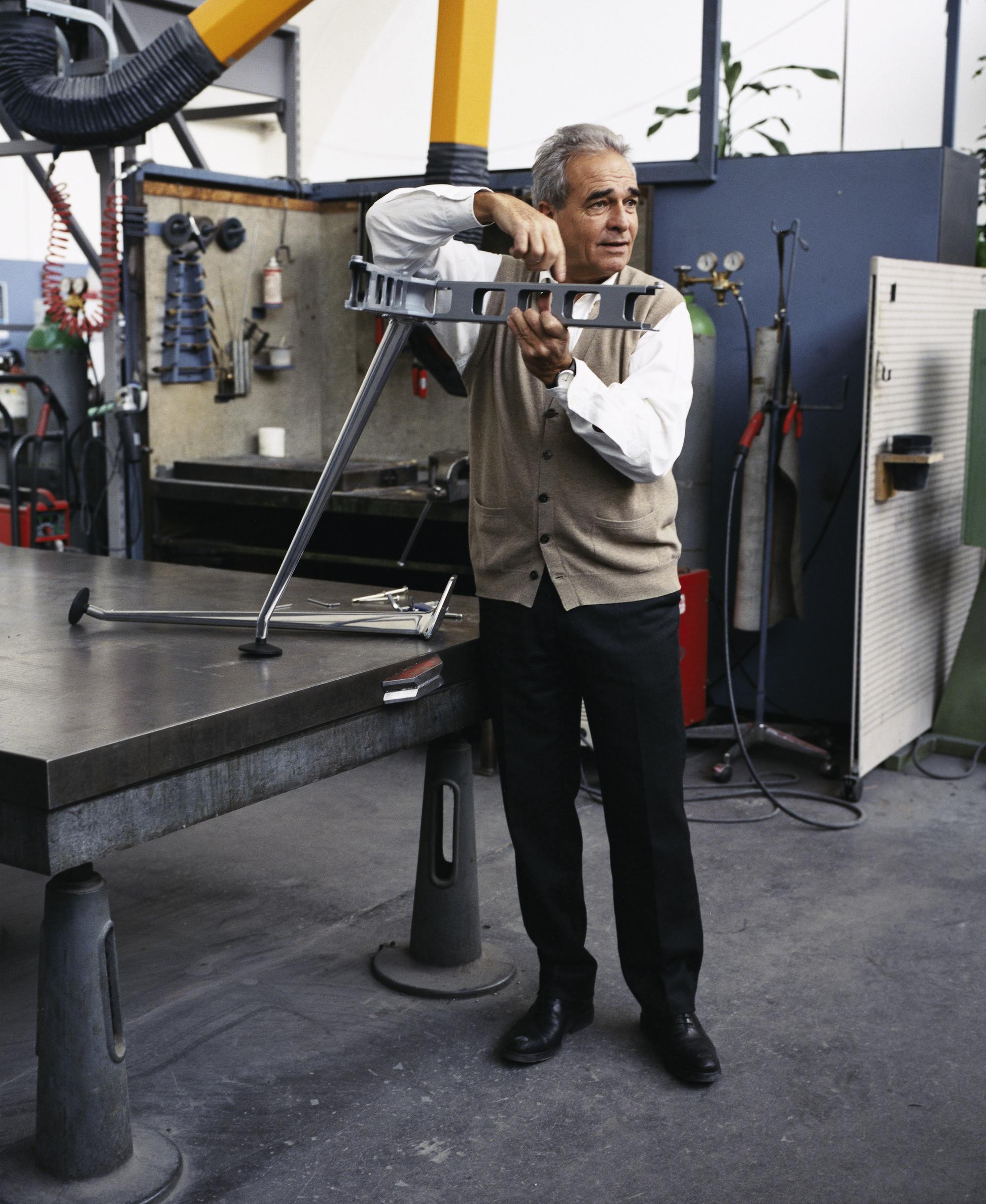
Alberto Meda in the Vitra workshop in Weil am Rhein illustrates the components of the Medamorph system, 2007, photo by Nicole Bachman, courtesy of Vitra
Alberto Meda, the protagonist of the exhibition currently occupying the Design Platform at Triennale Milano and extending into the spaces of the picture gallery and mezzanine, has often been associated with the label “designer-engineer” or “design engineer”. Indeed, he really is an engineer with all the trappings, although he does not design bridges or large public works but prefers to work on a smaller scale. Having graduated in Mechanical Engineering from the Politecnico di Milano in 1969, where he studied under Pietro Locatelli and Leo Finzi, he absorbed certain elements from their lessons that have accompanied him throughout his career. However, the designer born in 1945 in Tremezzina, in the province of Como, has many more strings to his bow. In his work, precision and in-depth knowledge of materials, their reactions as well as the constraints they impose, coexist with intuition and creative flair. To illustrate how these ingredients come together, I have chosen five projects from different phases of his design activity, which coincide with significant encounters and collaborations.
Meda has often been associated with the label “design engineer”.
The first part of Meda’s career, after a brief move to Magneti Marelli’s central production management office as an assistant, is closely linked to Kartell. During the six years that he worked at the company founded by Giulio Castelli with the aim of experimenting with new uses for plastic in the domestic environment, where he was technical director between 1973 and 1976, he patented an innovative process that exploits coaction, that is to say, the ability of materials to act on each other, gaining strength and resistance. The product, a small outdoor table, is not made by covering a chipboard panel with a sheet of plastic laminate, as was the custom in those days, but by casting the polyurethane foam directly into a plasticized mould. The collaboration with the Noviglio-based firm continued later with Meda’s designs for objects such as the Hanger clothes stand (2001) and the Aledin lamp (2016, with his son Francesco).
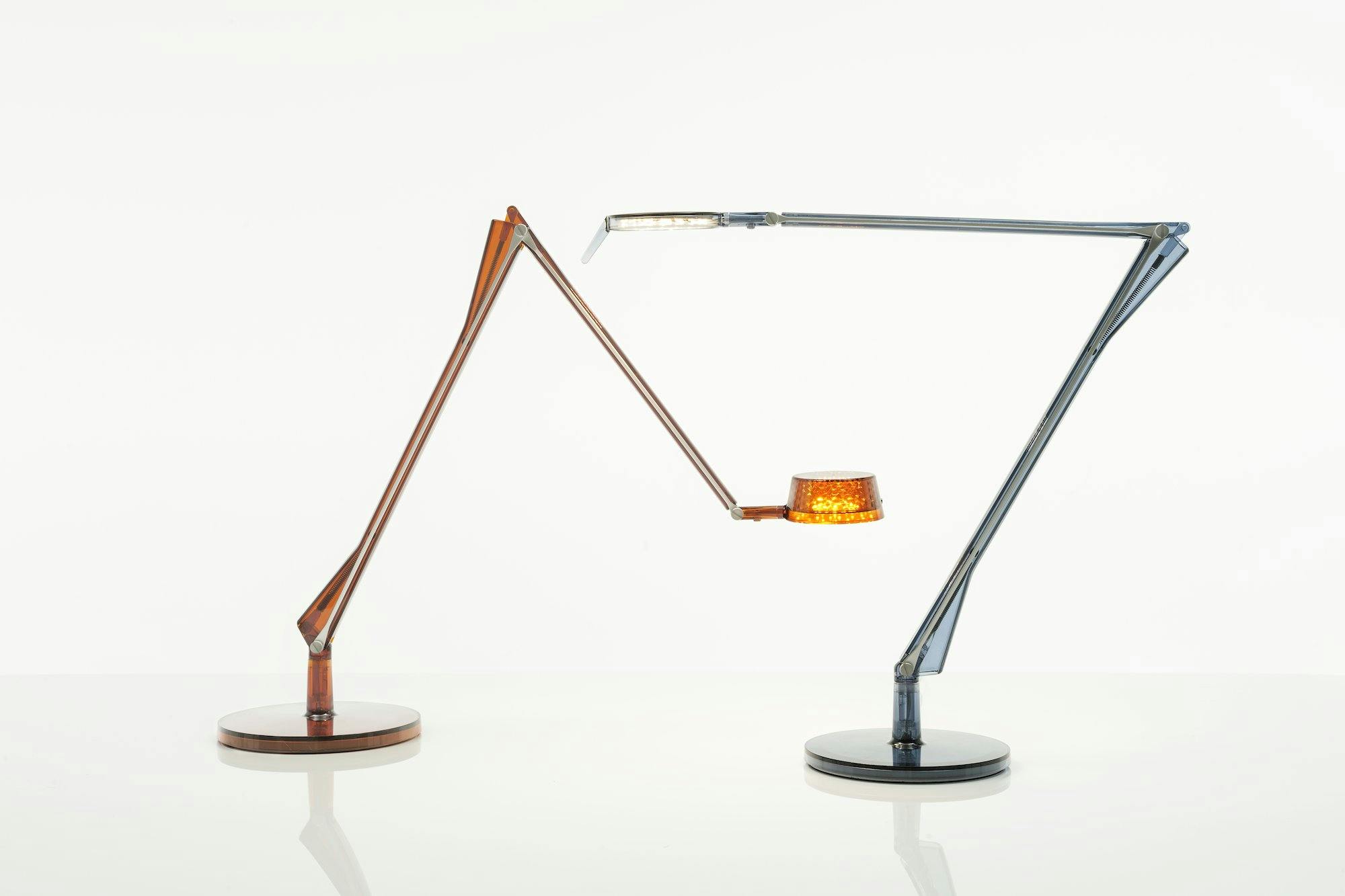
Alberto Meda, Francesco Meda, Aledin Dec e Aledin Tec, Kartell, 2016, courtesy Kartell
Winner of the Index Award in 2007 and part of the MoMA collection in New York from the following year, the Solar Bottle project was not the result of an industrial commission, but was instead developed together with Argentinian designer Francisco Gomez Paz, who had only just turned thirty at the time. It is a flat PVC container (useful for transport and storage), which sums up the themes of sustainability and technology. When exposed to the sun, the bottle purifies contaminated water and makes it drinkable with the help of UV-A rays, thanks to a system patented by a Swiss company. A decade later, the two designers developed a spin-off: the Solar Sensor, a reusable sensor that can be attached to any plastic bottle, turning it into a device for sanitizing water.
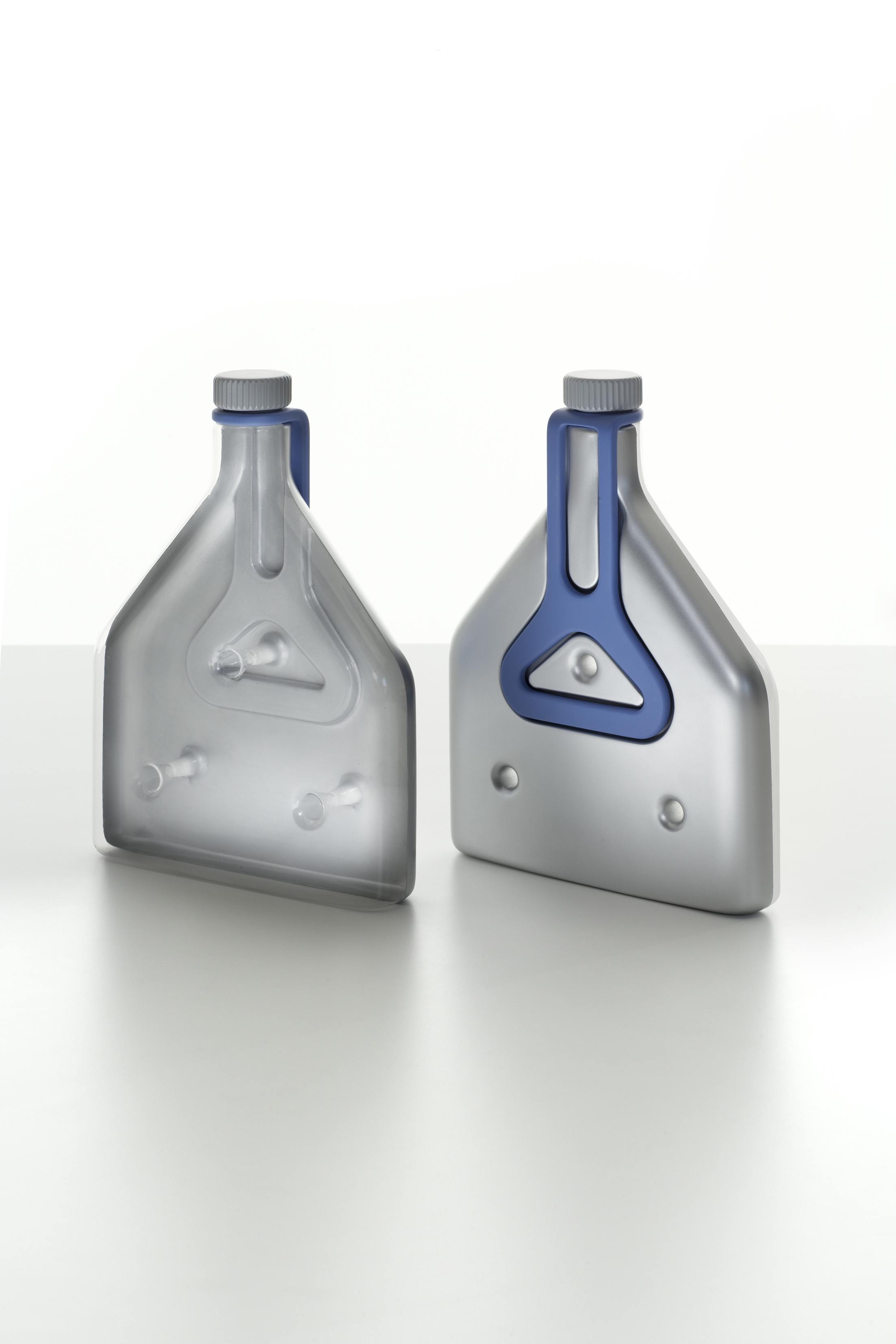
Alberto Meda, Francisco Gomez Paz, Solar Bottle, 2006, prototype
Together with Paolo Rizzatto and Luceplan, Meda has written an important page in the history of lighting, culminating with Compasso d’Oro awards for the Lola lamp, in 1989, and for the Metropoli series, and studded with successes such as Berenice (1985), Titania (1989) and Fortebraccio (1998). Mix, designed in 2005, again with Rizzatto, and awarded the third Compasso d’Oro three years later, demonstrates that light can even be made without an element that might seem fundamental, but which is actually an encumbrance: the light bulb. The white light emanating from the lamp is in fact the result of the clever interaction between different coloured LEDs, a trick that allows it to sport an ultra-slim head.
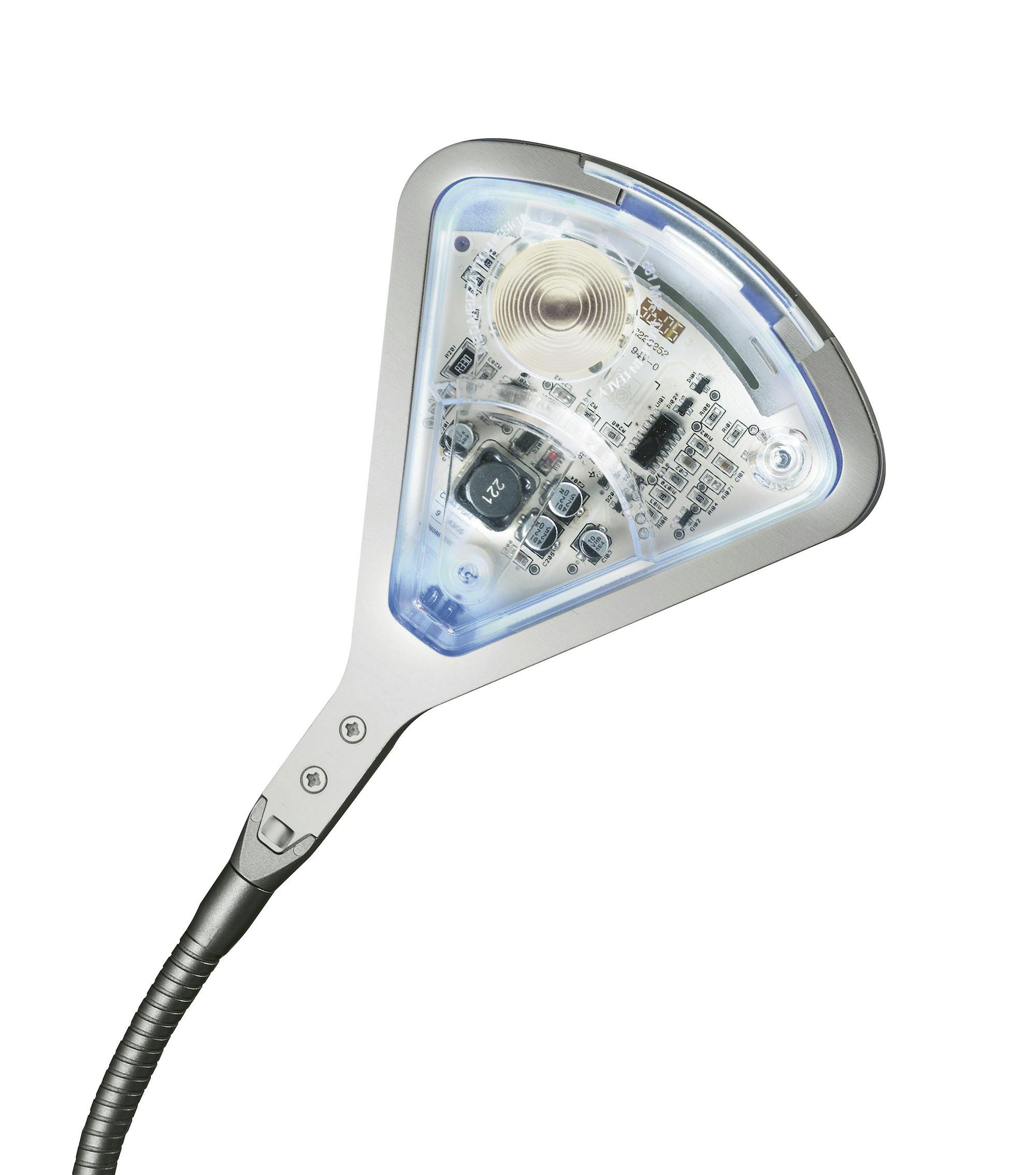
Alberto Meda, Paolo Rizzatto, Mix, Luceplan, 2005, photo by Ivan Sarfatti
The Physix office chair, developed in 2012 and featured in the exhibition in one of the “stage machines” designed by Riccardo Blumer to emphasize its complexity, is one of the finest results of the collaboration between Meda and Vitra because it effectively balances performance and aesthetics. Everything, or almost everything, hinges on the elasticity of the hi-tech fabric used for the upholstery, a flexibility that must, however, be perfectly managed in order to allow the chair to stretch into a relaxed position and then return to the upright position with a controlled movement. In order to support, and withstand, mechanical stress, the parts that make up the seat are made of different percentages of glass fibre.

Study of angles of movement of seat and backrest, Physix, 2011, photo by Florian Böhm, courtesy of Vitra
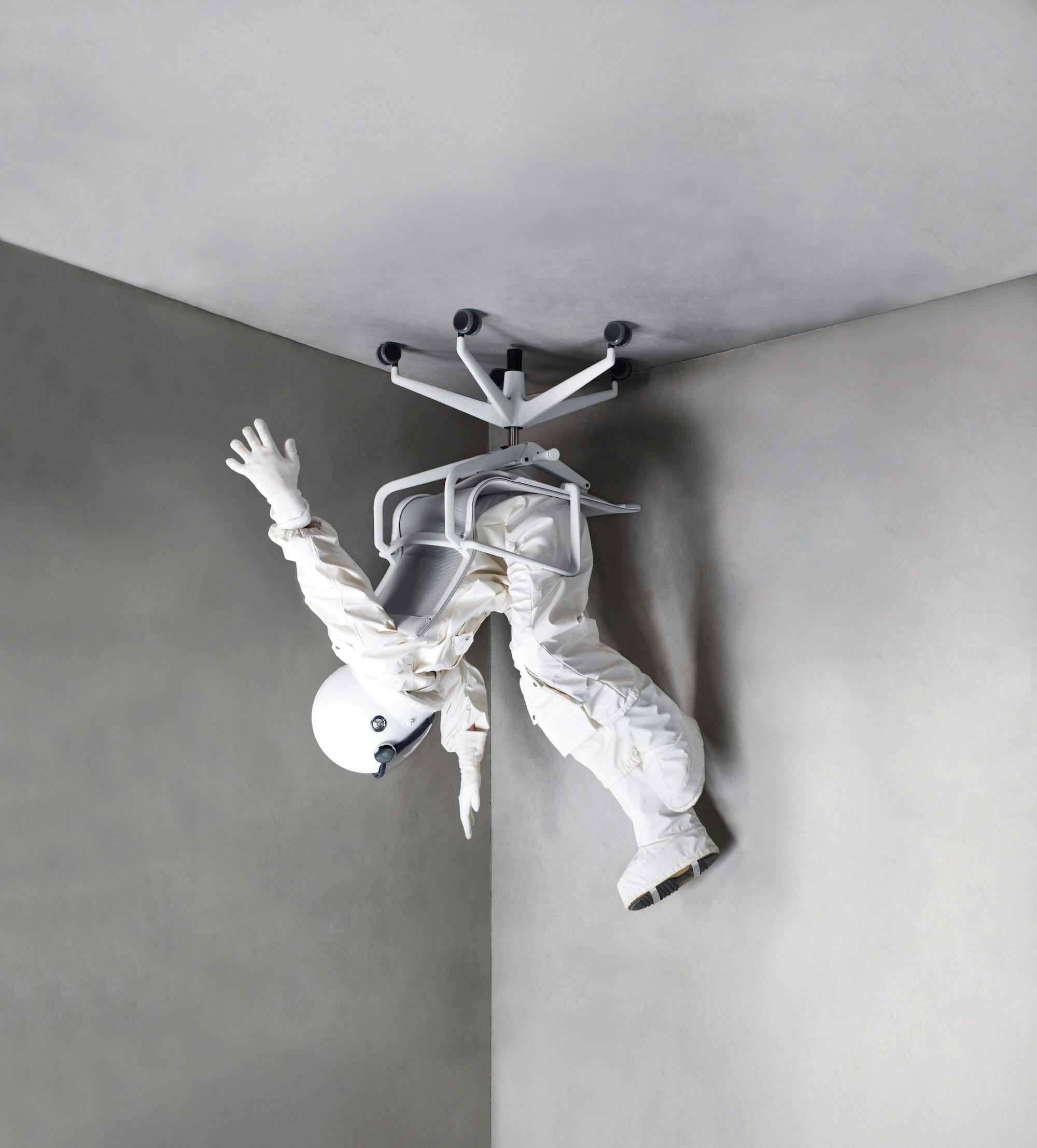
Physix, 2011 photo by Marcus Gaab, courtesy of Vitra
The recyclable polyester sound-absorbing panel system Flap (2016) has the same name as a moving component of aircraft wings that changes its angle during the various phases of flight. The ability to rotate in all directions and take on different angles thanks to a special joint is also fundamental in this design, developed by Meda and his son Francesco for Caimi Brevetti. Here, two different approaches – the more technical/practical one of the father and the more graphic one of the son, a graduate of the Istituto Europeo di Design (IED) – converge, giving life to an object that solves the problem of noise pollution in enclosed spaces and at the same time enables numerous combinations thanks to the juxtaposition of single coloured modules in the shape of an irregular quadrilateral. Winner of yet another Compasso d’Oro, the fifth out of six overall.
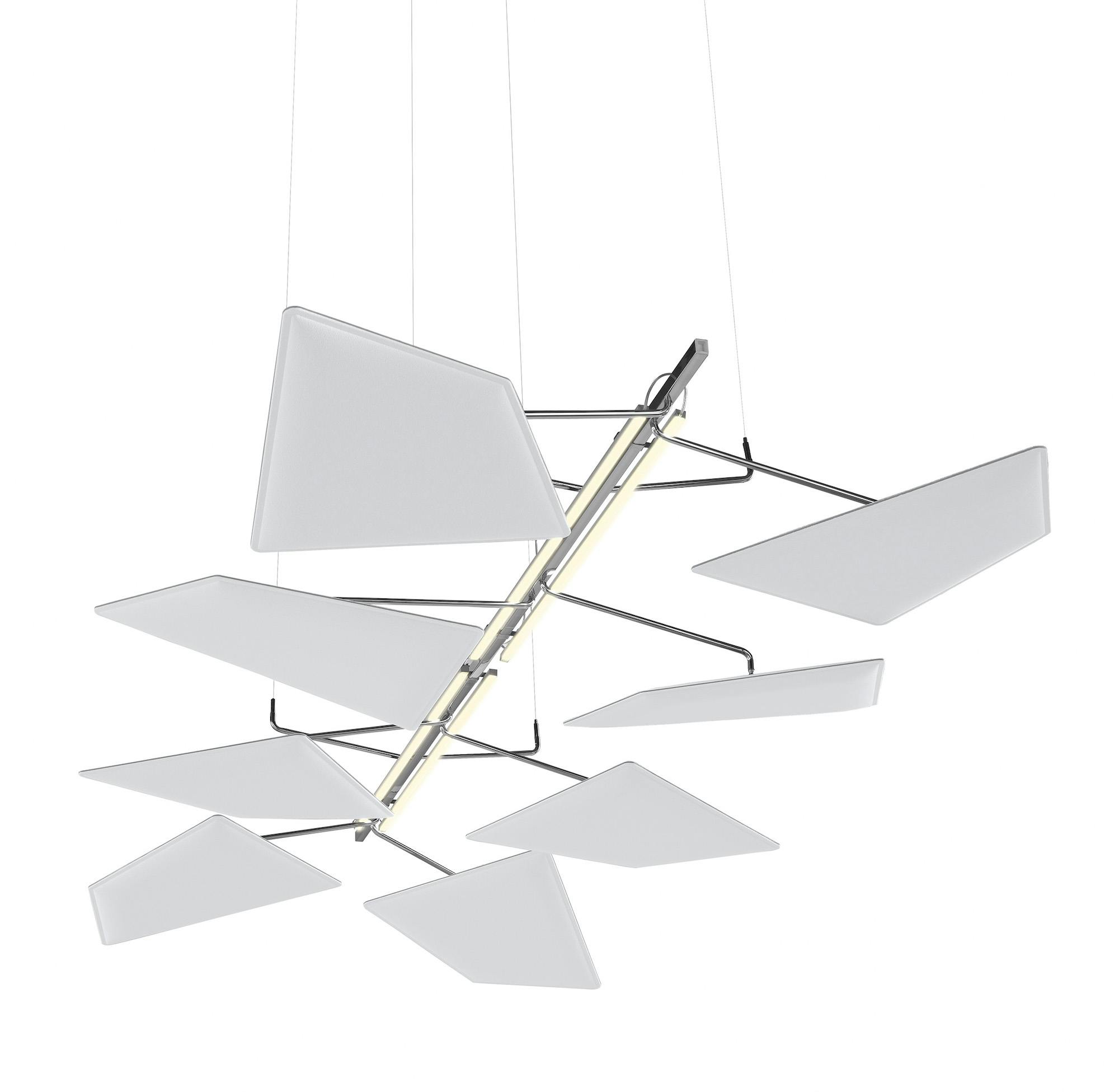
Alberto Meda, Francesco Meda, Flap ceiling (versione da soffitto), Caimi Brevetti, 2013, foto Interno20, courtesy Caimi Brevetti
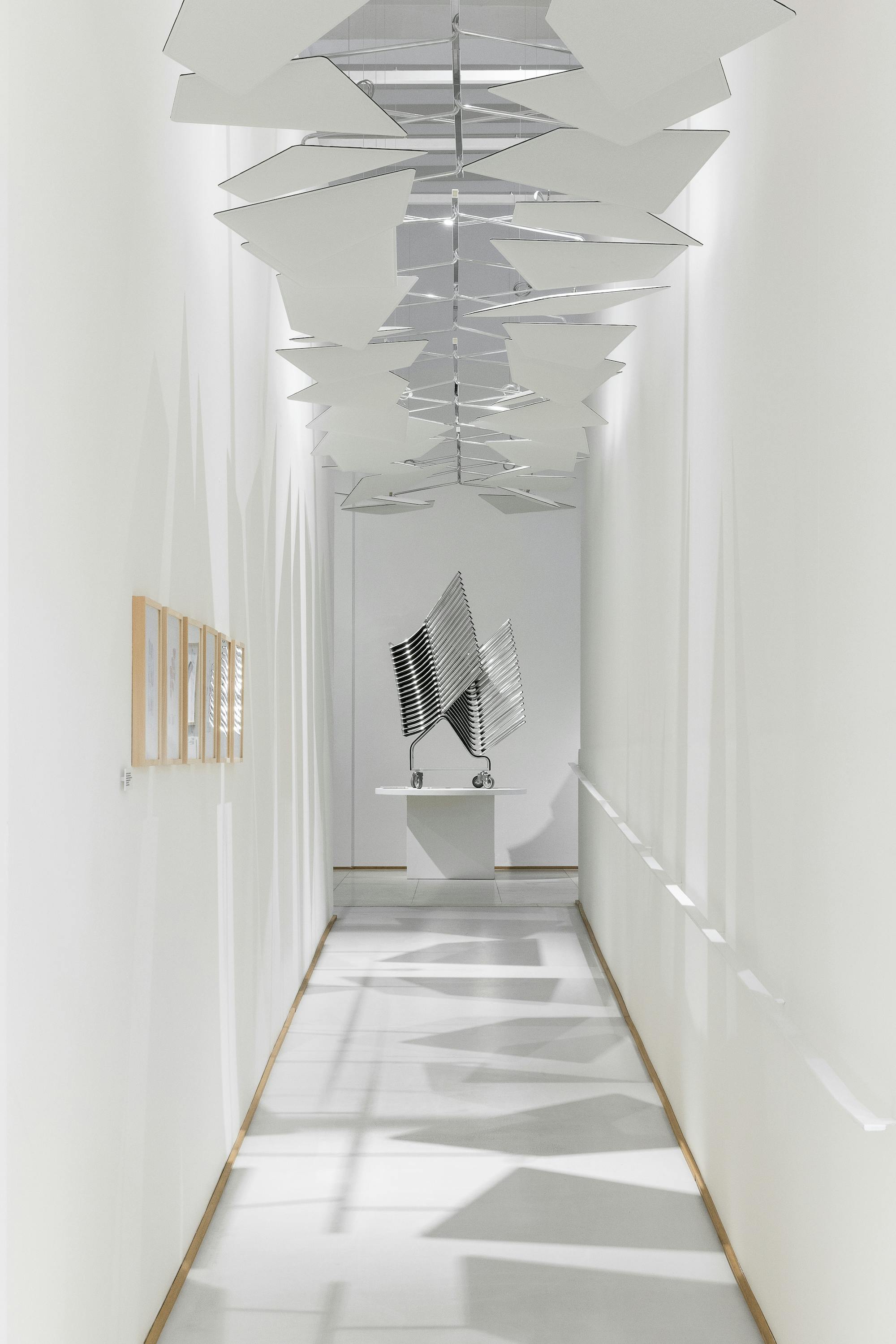
Installation view, photo by Gianluca Di Ioia
Related events
